Monster Hunter is a video game series produced by Capcom where the aim of the game is pretty self-explanatory. You go out and hunt monsters. The basic gameplay loop has your character (a hunter) prepare materials (such as armor and weapons), select a mission, find the monster, hunt it down (through killing or capturing), be rewarded with materials from the monster, and then use those materials to craft even better equipment to challenge harder monsters. Though the explanation is pretty bare, the main highlight of the games are the hunts themselves.
There are several factors that make Monster Hunter fun, in that it encourages learning monster attack patterns, careful, strategic play, and having a visual indicator of progress as your hunter’s equipment improves. Unlike other role play games, there is no traditional system of levels. Though there are Hunter Ranks, all they are for is allow you to register for tougher hunts and even more difficult monsters. That means that your hunter at the end stages of the games are still the same as your hunter from the beginning in terms of “stats”. Ultimately, the strength of your hunter is dependent more on the skill of the player rather than equipment.
Monster Hunter as a game is best enjoyed with company.
Though there is enjoyment to be had in watching players take down difficult hunts solo (and even competitions to see who can complete a hunt the fastest), the multiplayer aspect is what drives the series’ success. The games are a social experience and their recent releases reflect that trend. Though the first game released on the PlayStation 2, subsequent releases were released on handheld gaming devices such as the PlayStation Portable and the Nintendo DS. This encouraged local play, as wi-fi capabilities did not appear until later installments.
In Japan, Monster Hunter is ridiculously popular, with many references in anime and manga.
There is even a small reference to Monster Hunter in Scott Pilgrim, a Canadian graphic novel series.
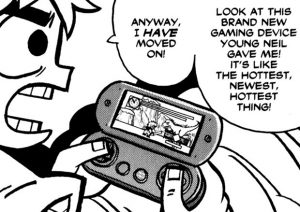
Universal Studios Japan even hosts events themed around Monster Hunter in celebration of a new installment in the series.
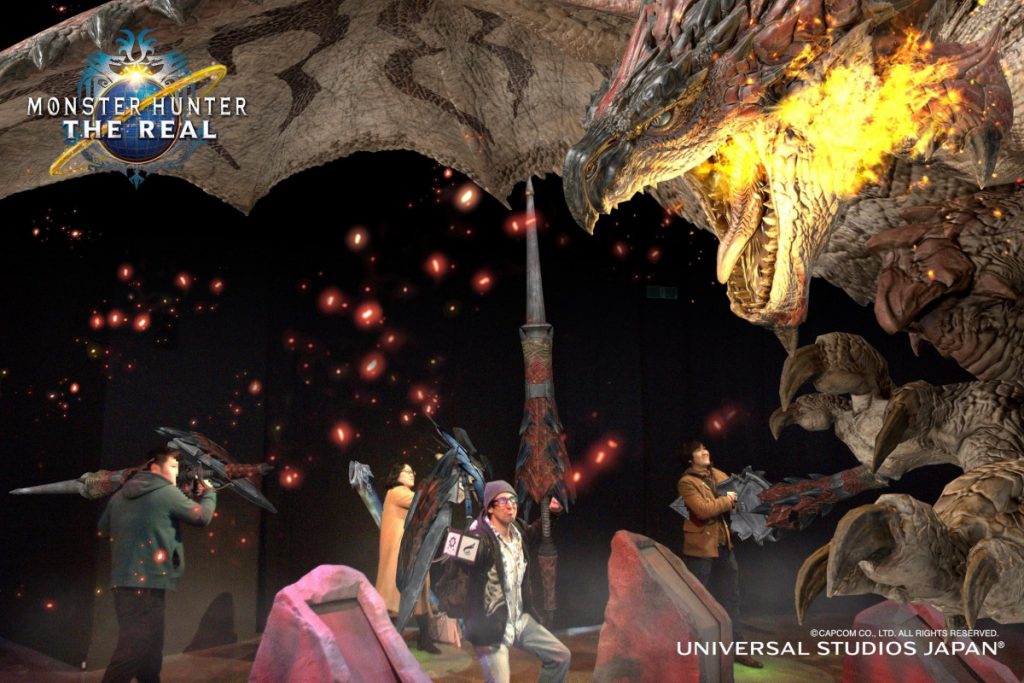

In addition, Monster Hunter has crossovers with other popular franchises such as Mario, The Legend of Zelda, Metroid, Megaman, and even Metal Gear Solid.
The multiplayer aspect of Monster Hunter encourages social interaction. It’s not uncommon to see people on the transit systems in Japan playing Monster Hunter on their gaming devices whether it be the Nintendo DS, the Switch, or even the PSP for those who still enjoy playing the older games. The release of a new Monster Hunter game is always crowded, with lines wrapping around the block.
Overseas however, the series had not reached the same level of popularity as in Japan. Lack of advertisements, Japan only releases, and a different gaming culture turned Monster Hunter into a game that was heard of, but never really discussed. Ryozo Tsujimoto, the producer of the series, mentions the reason as having “always seen the West and Japan as fundamentally different, especially when it comes to factors like population density. With people commuting on trains in Japan, it was a lot easier to find people to form a hunting party with to take down a big monster” (Wright). Home consoles such as the Xbox and PlayStation are much more popular overseas, which is why with Monster Hunter being primarily on handheld consoles, the series was always niche in the West.
Monster Hunter, as a game series created in Japan, definitely pulls inspiration from Japanese culture whether it be historical, mythological, and even modern pop culture.
- Yukumo Village armor
- Yamato (male), Hinata (female) armor
- Toka Armor
One prominent example of inspiration is a monster called the Mizutsune (Tamamitsune in Japan).
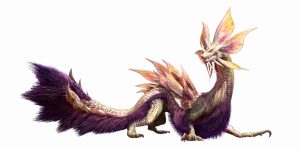
Mizutsune is special in that its’ name is a reference to Japanese mythology. The name mizutsune can be broken down into mizu (Japanese for water) and tsune which is taken from the kitsunes of Japanese folklore. Kitsune are foxes that are tricksters and spirits that have the ability to shapeshift and use them to fool people. Mizutsune’s title in Monster Hunter is the Bubble Fox wyvern, in homage to the kitsunes. The frills on its head also give it the visual appearance of a fox.
Mizutsune’s title is named after the particular way in which it retaliates against foes. They secrete a foamy fluid that causes adversaries to slip and lose their balance while the Mizutsune’s claws and scales allow it to slide around on the foam it produces. It is also capable of launching a thin beam of water at foes from a distance and utilizes the foam it produces to maneuver in unexpected positions, in reference to the tricky nature of kitsunes.
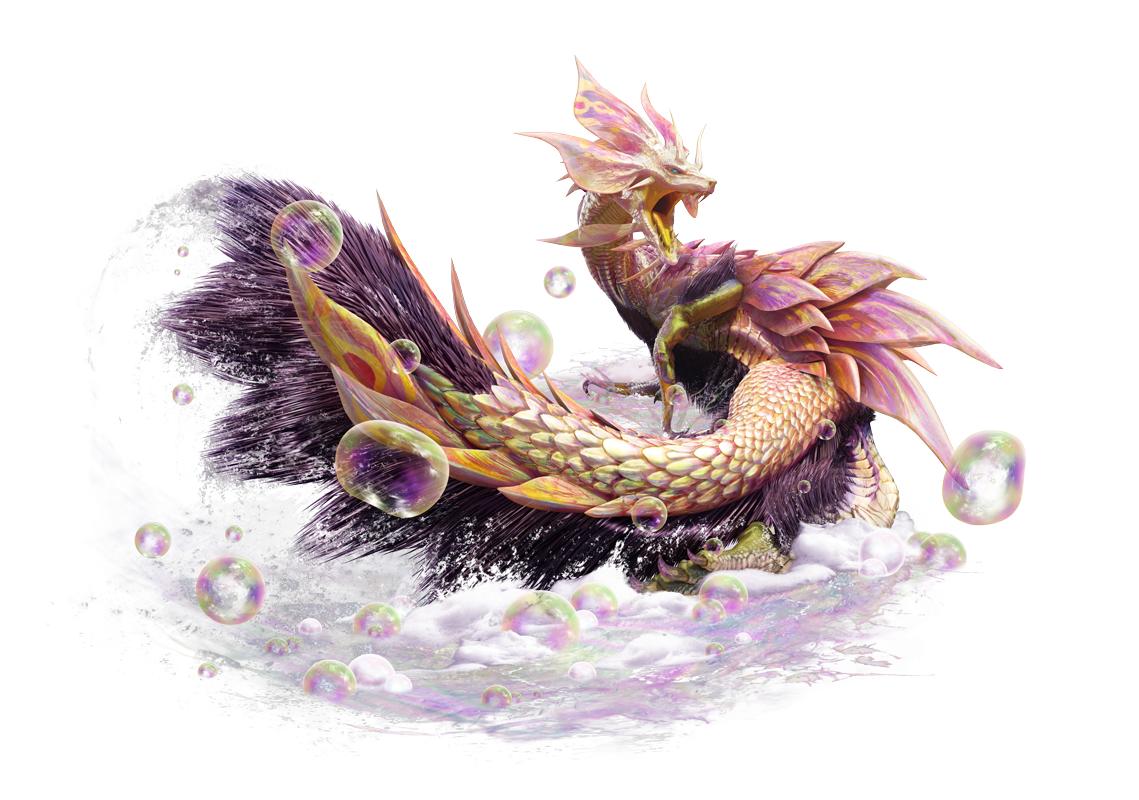
As a special note, every Mizutsune you hunt in the games are male due to the fins turning a vivid red when angered. This is a mating behavior exhibited in males of the species to attract mates. However, this leads to male mizutsunes in mating season being extremely aggressive and territorial, leading to the reason your hunter fights one in the game.
Another reason why hunting male mizutsunes in mating season is important is the armor created from the monster. There is a theme in how armor corresponds to monsters in Monster Hunter with Mizutsune’s armor being themed after marriage. There are two categories of armor in Monster Hunter with one set being for melee weapons and the other set being for ranged weapons. Mizutsune’s melee armor set matches with the marriage attire that is used in traditional Shinto ceremonies while the ranged armor set is for the guests.
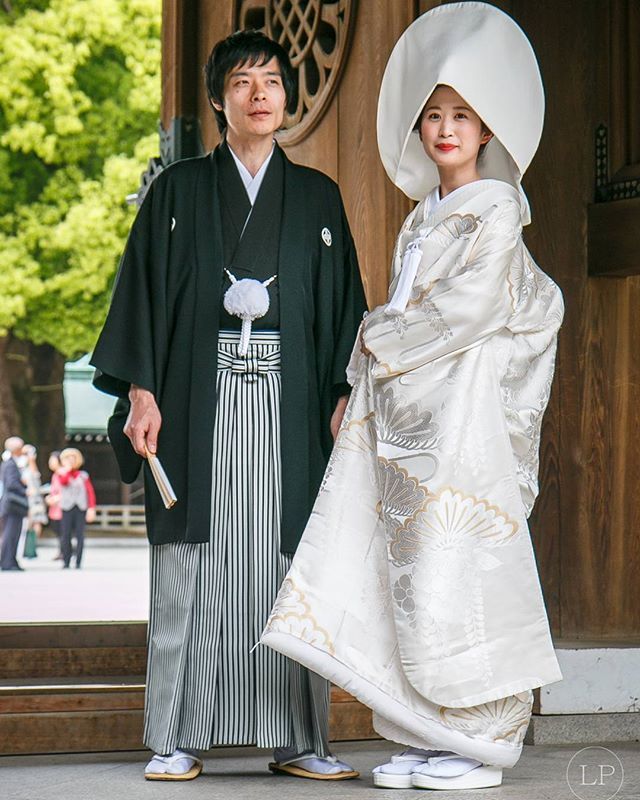
Shinto wedding attire
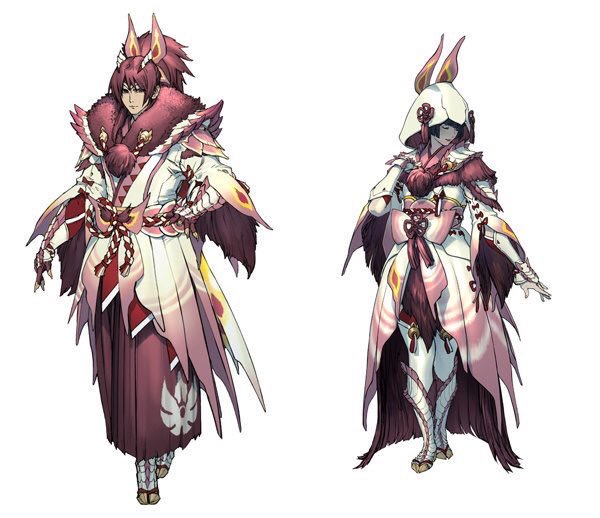
The melee armor version
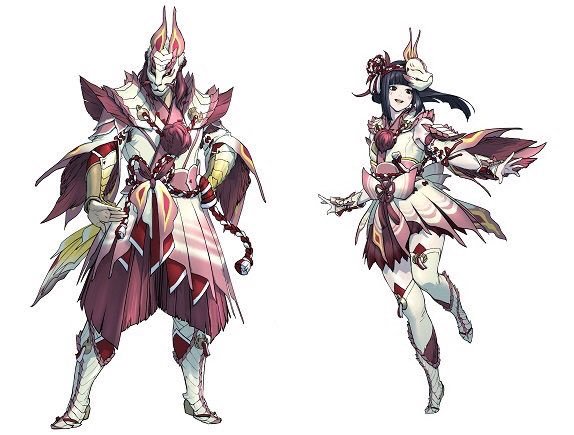
The ranged armor version
As a final note, the theme music that plays as you hunt a Mizutsune utilize Japanese instruments such as the bamboo flute and the shamisen.
There are some American aesthetics present in the armor sets of Monster Hunter as well. The Daimyo Hermitaur (ignoring the fact that daimyos are the title given to Japanese feudal lords), is a large hermit crab-like monster that uses its claws to huddle in on itself to defend against attacks. As a primarily defensive oriented monster, the armor set heavily resembles the aesthetics of American football players. Male versions of the armor depict football players while the female version is meant to resemble cheerleaders.
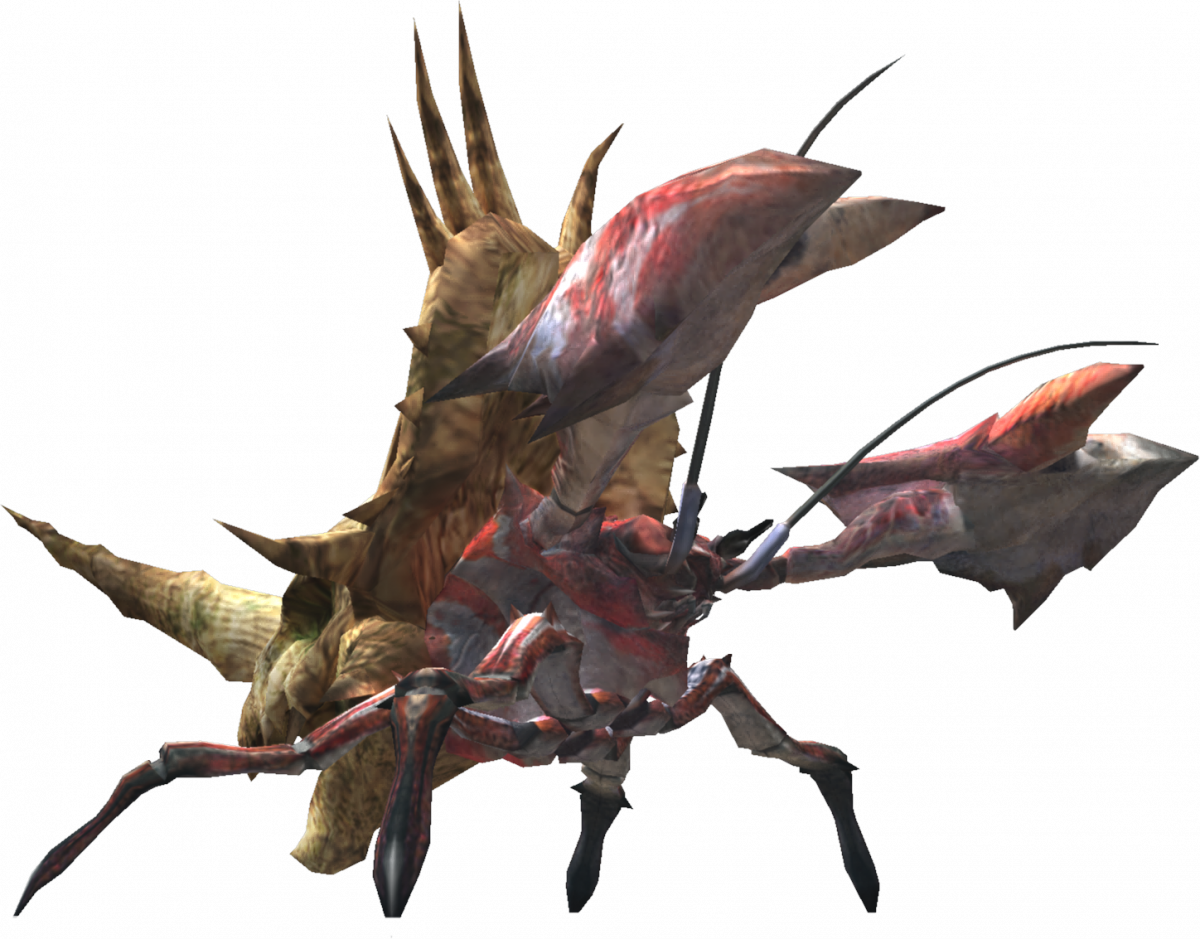
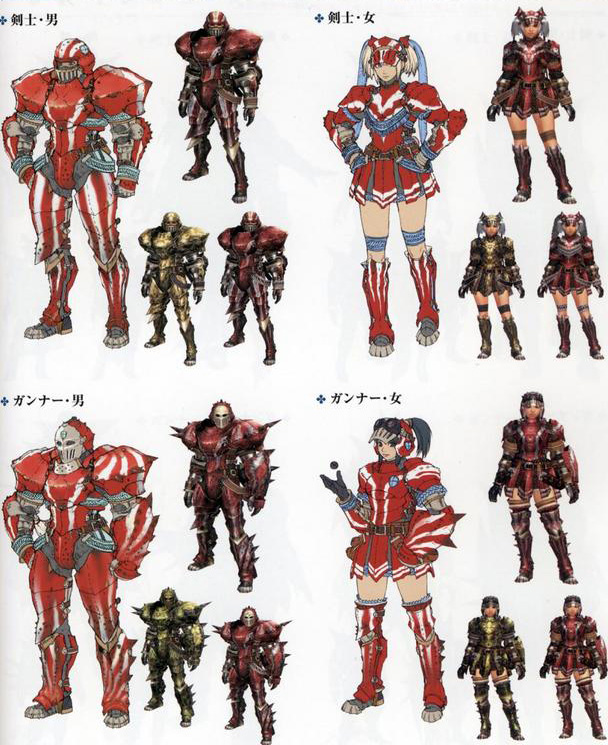
In another source of inspiration, the Nibelsnarf is a fish-like monster that disguises itself by burying itself under the sand to ambush prey. When mostly submerged, its back resembles a sand dune until one notices the breathing it does, filtering sand from its gills. Nibelsnarf is always fought in a desert, thus its armor set is fashioned after desert patterned military fatigues worn by those operating in desert climates.
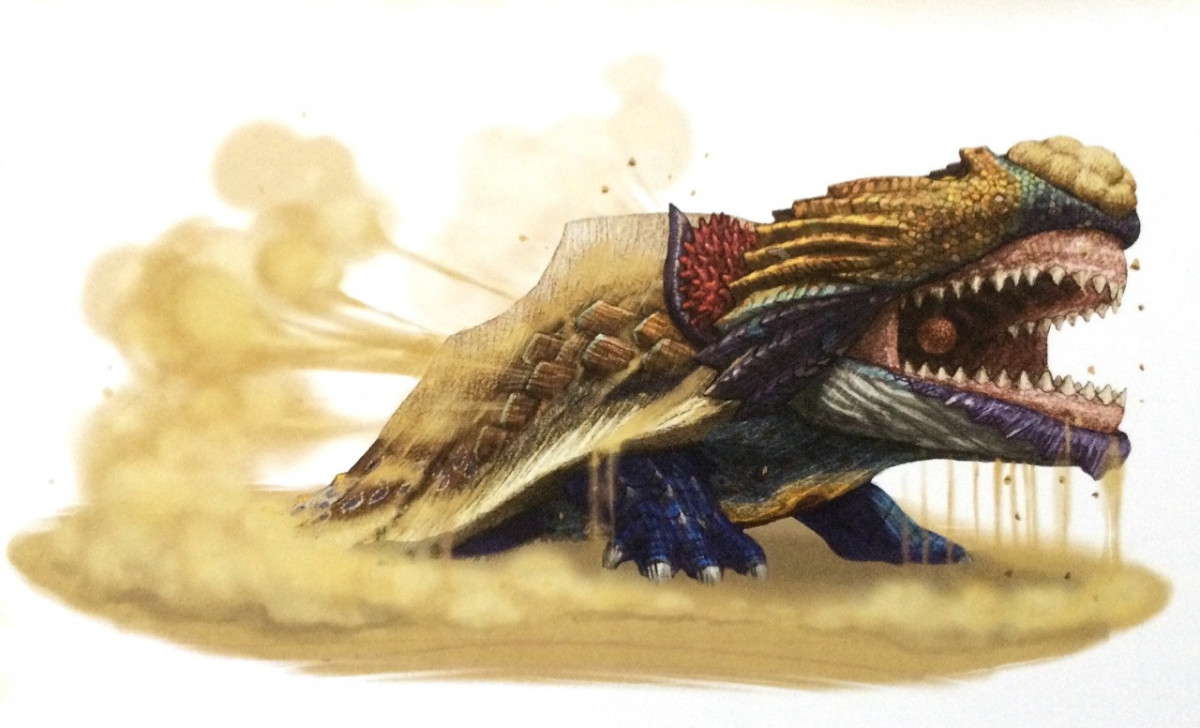
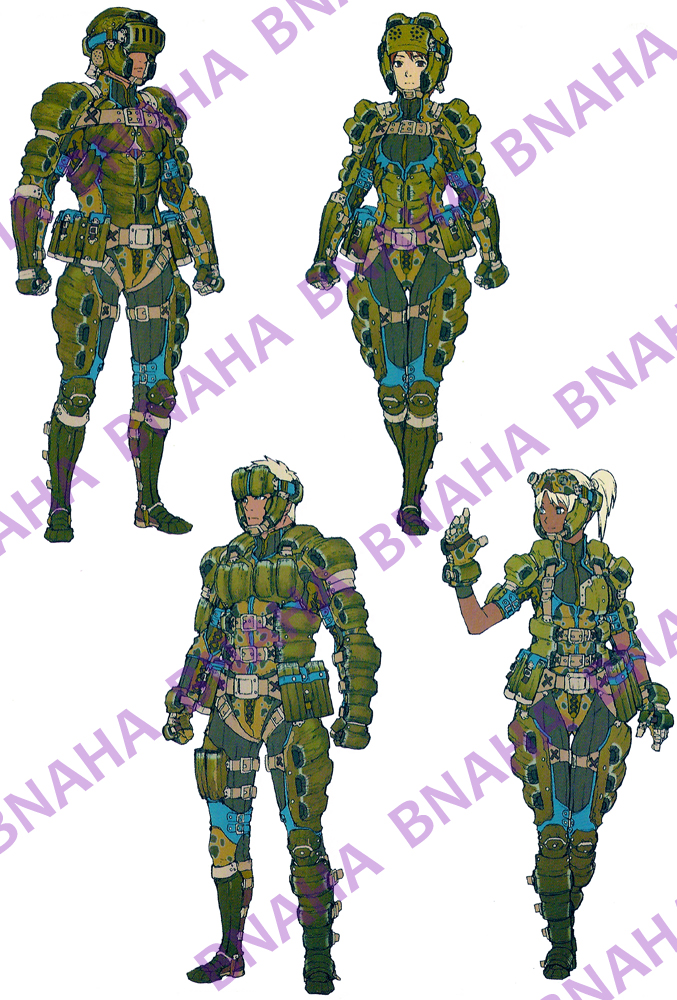
Speaking of desert climates, there is also an armor set that is popular with fans of the series which resembles the attire of cowboys in the Wild West.
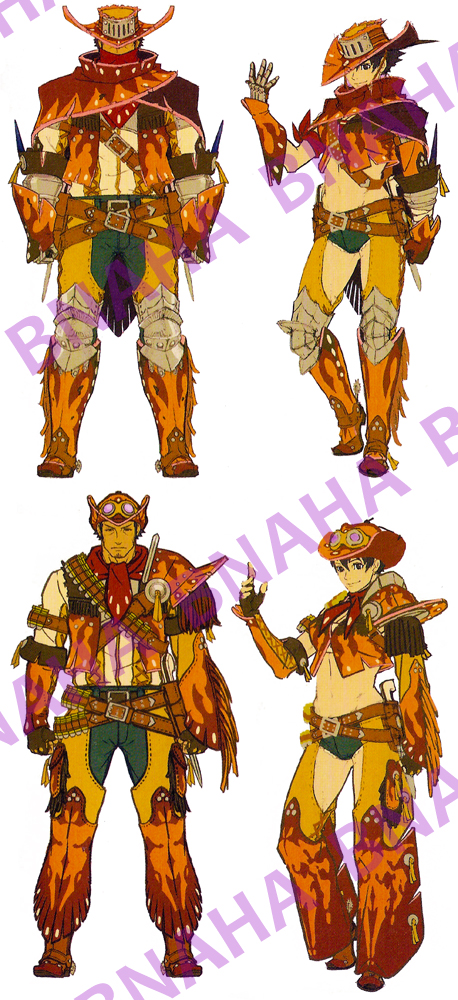
When discussing Monster Hunter, one of the most popular creatures in fantasy has always been the dragon. Dragons and their derivatives feature prominently in Monster Hunter’s roster with the wyvern label being attached to almost every monster in the franchise. There are bird wyverns which resemble different varieties of bird, brute wyverns that resemble theropods such as tyrannosaurus rex, piscine wyverns modeled after fish, and fanged wyverns which resemble canines.

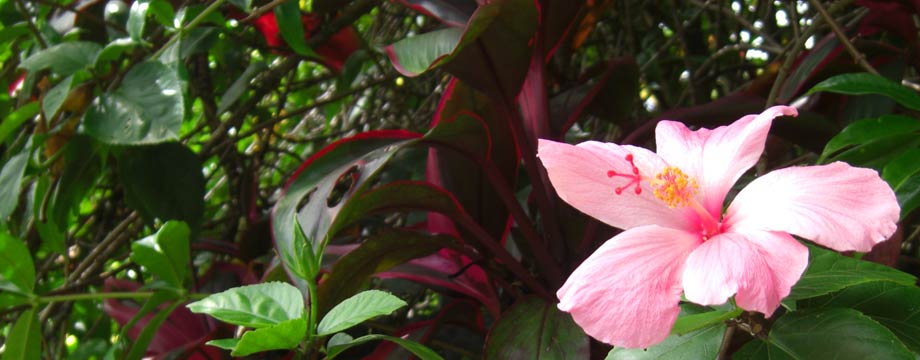
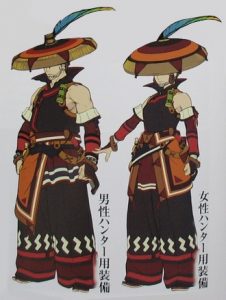
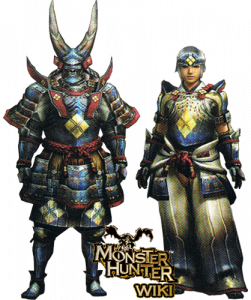
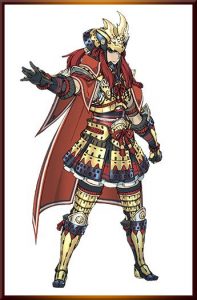
I really enjoyed your use of images and videos here! It helps your project “pop”, pun not intended.
I didn’t realize how complex the cultural crosscurrents in Monster Hunter were. I’ve seen a lot of Western outfits in Japanese RPGs but I wasn’t expecting armor modeled after American footballers and cheerleaders. That quote from Ryozo Tsujimoto was really interesting as well. I never thought about how commuting on a train could make finding players much easier, but trains don’t seem as common here. I can easily see how “World” could’ve picked up the franchise’s popularity in the West, since American gamers seem to prefer online co-op on consoles.
I really enjoyed your use of images and videos here!
These videos and photos are amazing!
Thanks for sharing these awesome images and videos.
best oral anabolic steroid
References:
http://www.nenboy.com
fastest ways to build muscle
References:
gitea.fcliu.net
gulfport casino
References:
https://syq.im:2025/wandalieb0860